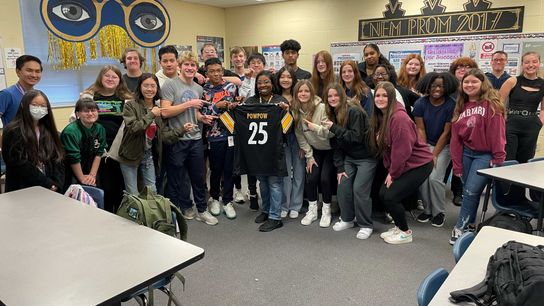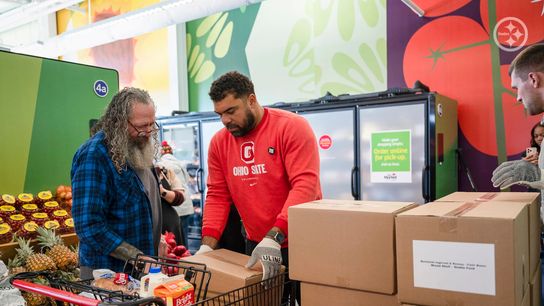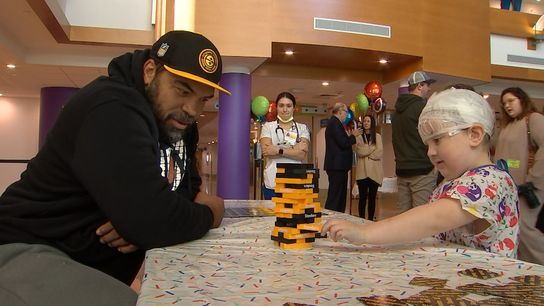The Pittsburgh Steelers are an iconic NFL team that inspires countless fans, including students. In fact, many young people get so excited that they often dismiss their college assignments in favor of catching up on the latest news or matches. They hire a paper writer to avoid lagging behind academically and delve fully into everything the Steelers have to offer.

NBC
Yvette “Pow Pow” Powell, a Steelers fan living in Kansas City Chiefs territory, went viral when her students gave her a custom jersey.
Fortunately, the Pittsburgh Steelers are not merely sports stars. They are known to take active action in their communities, being a force for positive change. Their influence goes beyond game day hype, shaping a culture of volunteerism and social responsibility among Pittsburgh-area students and fans nationwide.
The Steelers’ Commitment to Community Service
The Steelers have a longstanding tradition of supporting the Pittsburgh community. Through the Steelers’ “Social Justice Fund” and the team’s partnerships with local charities, players and staff actively engage in initiatives focused on housing, food insecurity, youth programs, and more. The Rooney family, owners of the Steelers, established the team’s legacy of community support, with players continuing this legacy through volunteering, mentoring, and fundraising efforts.
The Steelers’ visible and ongoing commitment to Pittsburgh and beyond serves as a powerful example to students. Seeing their favorite players dedicate time and resources to community service encourages young fans to get involved, highlighting the importance of giving back and building a strong, supportive community.
How Steelers Culture Inspires Student Volunteerism
Many Pittsburgh-area students, whether in high school or college, look up to the Steelers as more than just athletes. These students are often influenced by the Steelers’ initiatives to start their own volunteer activities or participate in existing programs that the Steelers support.
School Outreach Programs: Steelers players frequently visit schools where they speak about leadership, resilience, and community. These visits are more than pep talks; they motivate students to use their time and talents to help those around them.
Social Media and Visibility: The Steelers’ social media channels often highlight community work, making students aware of ongoing volunteer opportunities and inspiring them to participate in similar activities.
Collaborations with Student Organizations: The Steelers collaborate with local universities and student organizations, providing resources or partnering on service initiatives. This engagement allows students to experience teamwork beyond the field.
Volunteer Programs and Events That Engage Students
The Steelers’ involvement in various local causes has led to partnerships with organizations where students are often active participants. Many student organizations rally around Steelers-led events, from food drives to mentorship programs.

Tyler Ollason / Pittsburgh Steelers
Steelers' Cam Heyward helps with groceries as one of the many ways he gives back to the Pittsburgh community.
Annual Food Drives: Organized in collaboration with the Greater Pittsburgh Community Food Bank, these drives engage students in gathering food donations and distributing them to those in need.
Youth Sports Clinics: Steelers players and coaches hold sports clinics inviting student-athletes to assist with organizing and mentoring. These events foster a spirit of mentorship and allow students to develop leadership skills.
Steelers Run and Walk Events: These events are held to benefit causes such as cancer research, and they bring together fans, students, and players for a shared purpose. Many local students volunteer to help manage the events, supporting logistics and participant coordination.
Beyond gaining practical skills, students who volunteer with or are inspired by the Steelers’ initiatives often report a stronger connection to their community. Many realize that small contributions can make a big difference when joined with others’ efforts. This understanding fosters a cycle of giving back, motivating students to lead and initiate community programs.



